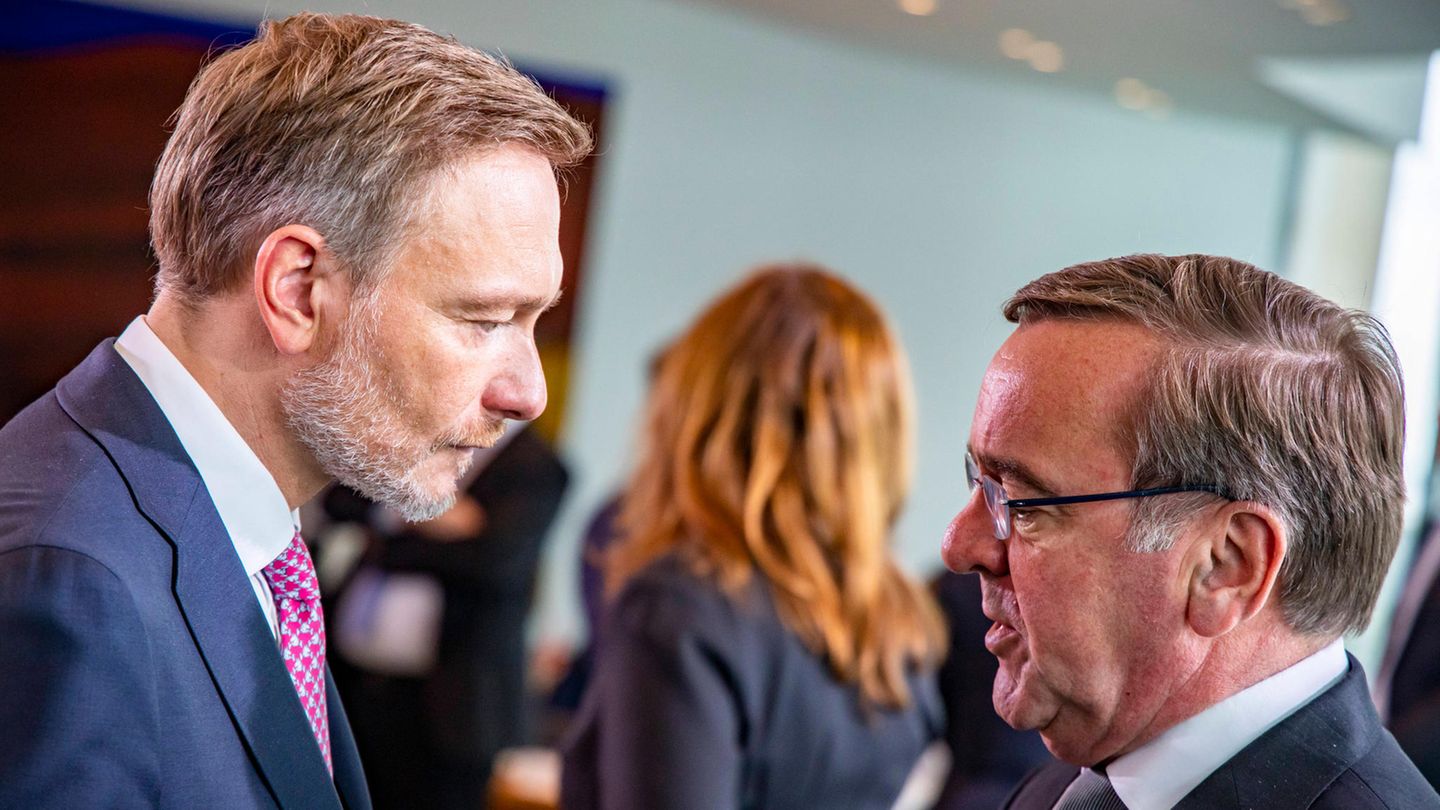A moratorium on aid to Ukraine, hope for Russian interest rates and a new round in the budget dispute: What is behind it and why Ukraine could suffer in the end.
No additional money for Kiev: If Finance Minister Christian Lindner (FDP) has his way, the federal government will have to make do with the money previously earmarked for aid to Ukraine.
In a letter to Defense Minister Boris Pistorius (SPD) and Foreign Minister Annalena Baerbock (Greens), he warns that “new measures” should only be taken if “financing is secured” in the budget plans for this and the coming years. The letter was first reported by the “Frankfurter Allgemeine Sonntagszeitung” (FAS). Compliance with the debt brake takes priority.
“From one day to the next, Olaf Scholz and his traffic light coalition are freezing financial and thus military support for Ukraine,” criticized CDU budget politician Ingo Gädechens in the FAS. The federal government, meanwhile, is trying to counteract the impression that it is cutting back on support for Ukraine. “Nothing will change in our commitment and our determination to support Ukraine,” said a government spokesman in Berlin on Monday.
Is the German government putting Ukraine at risk for the debt brake? Six questions and answers.
What is it about?
Germany is one of Ukraine’s most important supporters. German weapons make a decisive contribution to enabling Ukrainian troops to defend themselves against Russian attackers. This costs the federal government a lot of money. The federal government has budgeted 7.5 billion euros in aid for Ukraine this year.
This money has now been used up, much of it for arms deliveries. By the end of 2024, Germany plans to deliver 30 Leopard 1 battle tanks and ten Gepard tanks to Ukraine, as well as four additional IRIS-T air defense systems. Berlin has already promised Kyiv billions in arms deliveries for the coming year, including 20 self-propelled howitzers, 20 Marder infantry fighting vehicles, 27 Leopard 1s and five Gepard defense tanks.
However, Ukraine probably wants more weapons. According to “Spiegel”, a list of 30 projects is circulating in the Ministry of Defense, including Patriot anti-aircraft missiles, artillery ammunition, IRIS-T guided missiles – and last but not least: spare parts.
This is where Lindner comes in. The federal government would have to provide additional funds for additional weapons. This is exactly what the finance minister apparently wants to prevent. However, his ministry has already stated that it is “nevertheless prepared to examine the short-term provision of additional funds until then. However, the additional requirements must be specifically reported and comprehensible in order to comply with all budgetary rules and to be able to ask the German Bundestag for approval on this basis.”
What does Pistorius say about this?
The Defense Minister has not personally commented since Lindner’s letter became known. However, Pistorius has recently repeatedly criticized the defense spending planned for 2025 as being too low.
The ministry’s spokesman said that the signals from the Federal Ministry of Finance regarding exceptions were “welcomely received”. He was optimistic that the federal government would find “pragmatic solutions” to be able to cover “short-term needs”.
Is it true that the traffic light coalition will cut aid to Ukraine in 2025?
Yes, at least on paper: In its draft budget for next year, the German government has earmarked four billion euros for aid to Ukraine. A government spokesman pointed out in Berlin on Monday that no other country in Europe had budgeted more money for next year. Nevertheless, as of now, 3.5 billion euros less is planned in the budget than this year. However, this does not include a new financing instrument, but more on that later.
What does the debt brake have to do with it?
It is, if you like, the original problem. The traffic light coalition is determined to keep to it and therefore cannot simply finance more weapons for Ukraine through new debt. However, the German government wants to raise more money for Kiev with the help of a special instrument: a new loan of 50 billion US dollars (45 billion euros), provided by the European Union and the G7 states. The major industrial nations agreed on this at their summit in June.
The federal government even believes that the four billion in federal funds planned for 2025 will not be used up completely. It is “assumed that the funds earmarked for upgrading will not be used up in full,” says the draft budget. SPD defense politician Michael Roth sees things differently. The 50 billion dollars are “far from enough,” he told the newspapers of the Funke media group.
Will the $50 billion really be available in 2025?
That is the crucial question, and it is currently completely open. The loan is to be financed through interest income from frozen Russian assets stored in European and US accounts – 210 billion of which are in the EU alone. Last year alone, 4.4 billion euros in interest accrued here. Unlike the money itself, the interest income is easier to obtain. The federal government assumes that the loan will be approved this year and will be available in 2025.
However, the practical problems are huge. It starts with the fact that EU countries like neutral Austria do not want to have anything to do with military support for Ukraine. Therefore, the EU only wants to make 90 percent of the interest collected available to the armed forces and use the rest for direct financial aid to the invaded country. A small part is to be set aside to finance the expected legal disputes.
What does this mean for Ukraine?
The Ukrainian troops are engaged in a war of attrition with the Russian attackers. The front line has stagnated for months, and neither side has made any decisive gains in territory. This is wearing out a lot of material.
Ukraine has repeatedly complained about a lack of weapons and ammunition. Much will depend on whether its Western backers – especially Germany – can supply it with sufficient weapons in the future. A spokesman for the Ukrainian Foreign Ministry said: “We expect that the German government will find a way to provide additional funds for the Ukrainian defense forces this year as well.”
Source: Stern
I have been working in the news industry for over 6 years, first as a reporter and now as an editor. I have covered politics extensively, and my work has appeared in major newspapers and online news outlets around the world. In addition to my writing, I also contribute regularly to 24 Hours World.




